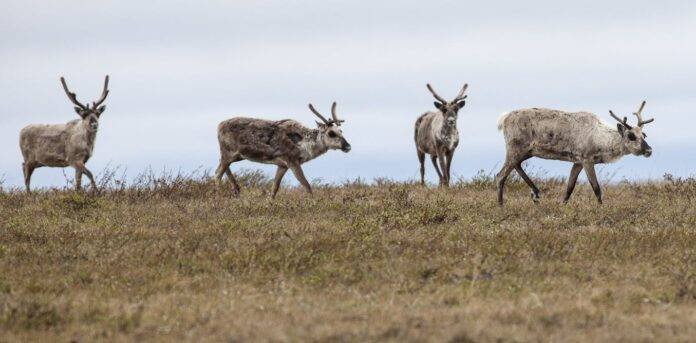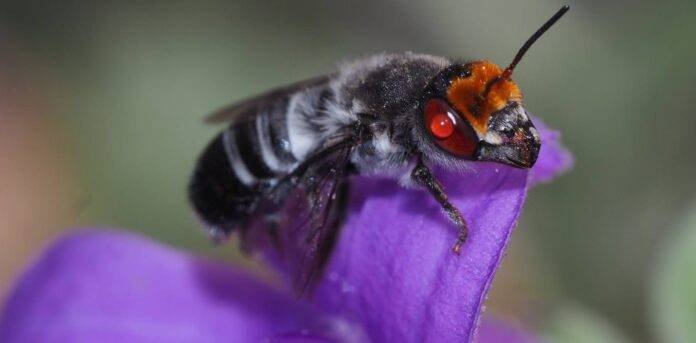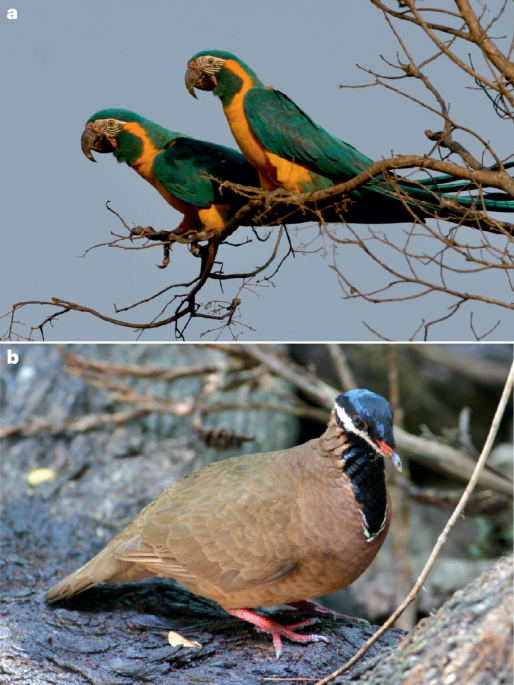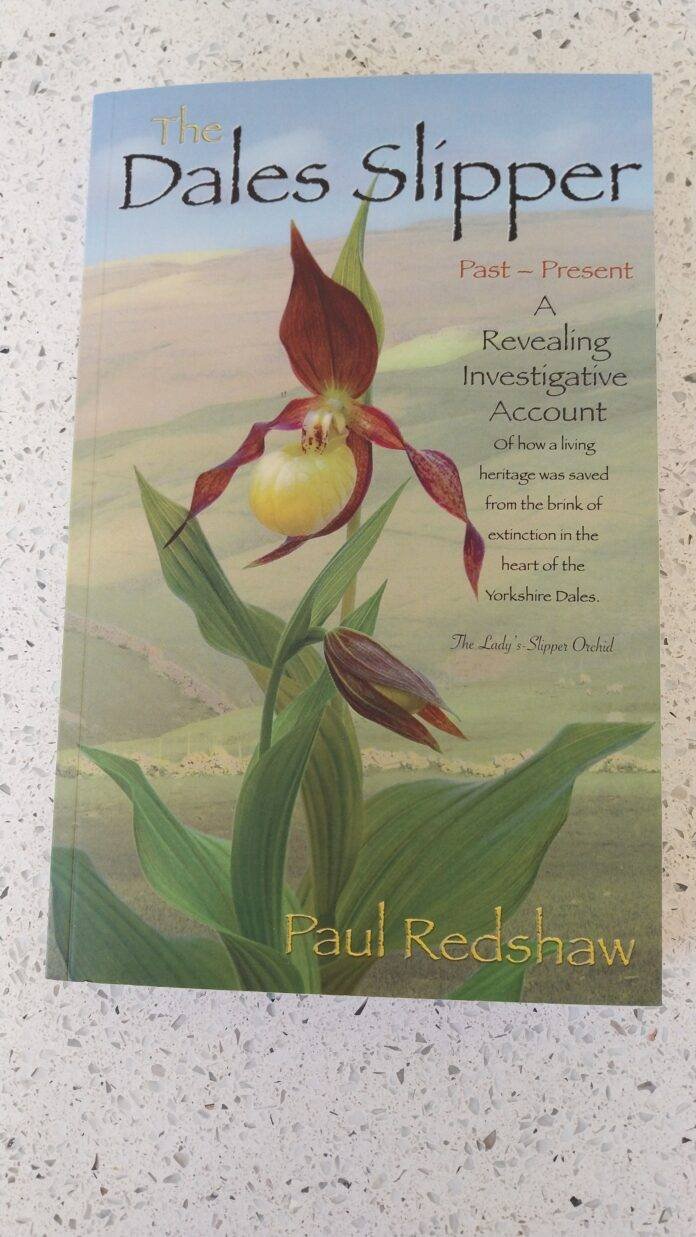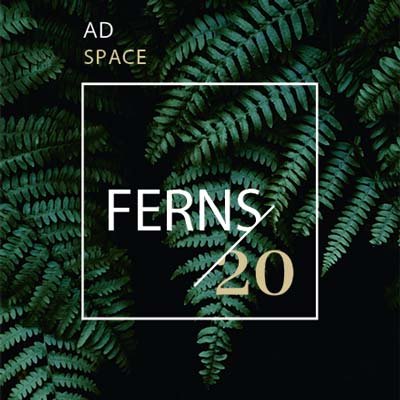Keith, D. A. et al. A function-based typology for Earth’s ecosystems. Nature 610, 513–518 (2022).
Dornelas, M. et al. Assemblage time series reveal biodiversity change but not systematic loss. Science 344, 296–299 (2014).
van Klink, R. et al. Meta-analysis reveals declines in terrestrial but increases in freshwater insect abundances. Science 368, 417–420 (2020).
Magurran, A. E., Dornelas, M., Moyes, F. & Henderson, P. A. Temporal β diversity—a macroecological perspective. Glob. Ecol. Biogeogr. 28, 1949–1960 (2019).
Dornelas, M. et al. Looking back on biodiversity change: lessons for the road ahead. Philos. Trans. R. Soc. Lond. B Biol. Sci. 378, 20220199 (2023).
Penny, A., Dornelas, M. & Magurran, A. Comparing temporal dynamics of compositional reorganization in long-term studies of birds and fish. Ecol. Lett. 26, 1071–1083 (2023).
Blowes, S. A. et al. The geography of biodiversity change in marine and terrestrial assemblages. Science 366, 339–345 (2019).
Finderup Nielsen, T., Sand-Jensen, K., Dornelas, M. & Bruun, H. H. More is less: net gain in species richness, but biotic homogenization over 140 years. Ecol. Lett. 22, 1650–1657 (2019).
Pilotto, F. et al. Meta-analysis of multidecadal biodiversity trends in Europe. Nat. Commun. 11, 3486 (2020).
Magurran, A. E., Dornelas, M., Moyes, F., Gotelli, N. J. & McGill, B. Rapid biotic homogenization of marine fish assemblages. Nat. Commun. 6, 8405 (2015).
Socolar, J. B., Gilroy, J. J., Kunin, W. E. & Edwards, D. P. How should beta-diversity inform biodiversity conservation?. Trends Ecol. Evol. 31, 67–80 (2016).
Yang, Q. et al. The global loss of floristic uniqueness. Nat. Commun. 12, 7290 (2021).
Daru, B. H. et al. Widespread homogenization of plant communities in the Anthropocene. Nat. Commun. 12, 6983 (2021).
FAO, ITPS, GSBI, SCBD, and EC. State of knowledge of soil biodiversity—Status, Challenges and Potentialities. Summary for Policy Makers (FAO, 2020).
Johnson, T. F. et al. Revealing uncertainty in the status of biodiversity change. Nature 628, 788–794 (2024).
Guerra, C. A. et al. Global hotspots for soil nature conservation. Nature 610, 693–698 (2022).
Eisenhauer, N., Bonn, A. & A. Guerra, C. Recognizing the quiet extinction of invertebrates. Nat. Commun. 10, 50 (2019).
Anthony, M. A., Bender, S. F. & van der Heijden, M. G. A. Enumerating soil biodiversity. Proc. Natl Acad. Sci. USA. 120, e2304663120 (2023).
Cameron, E. K. et al. Global mismatches in aboveground and belowground biodiversity. Conserv. Biol. 33, 1187–1192 (2019).
Bowler, D. E. et al. Mapping human pressures on biodiversity across the planet uncovers anthropogenic threat complexes. People Nat. 2, 380–394 (2020).
Lister, B. C. & Garcia, A. Climate-driven declines in arthropod abundance restructure a rainforest food web. Proc. Natl. Acad. Sci. USA. 115, E10397–E10406 (2018).
Vicente-Serrano, S. M., Beguería, S. & López-Moreno, J. I. A Multiscalar drought index sensitive to global warming: the standardized precipitation evapotranspiration index. J. Clim. 23, 1696–1718 (2010).
de Vries, F. T. et al. Land use alters the resistance and resilience of soil food webs to drought. Nat. Clim. Chang. 2, 276–280 (2012).
Oliver, T. H. et al. Interacting effects of climate change and habitat fragmentation on drought-sensitive butterflies. Nat. Clim. Chang. 5, 941–945 (2015).
Lopez, B. E. et al. Global environmental changes more frequently offset than intensify detrimental effects of biological invasions. Proc. Natl. Acad. Sci. Usa. 119, e2117389119 (2022).
Pereira, H. M. et al. Scenarios for Global Biodiversity in the 21st Century. Science 330, 1496–1501 (2010).
Field, C. B. & Barros, V. R. Climate Change 2014—Impacts, Adaptation and Vulnerability: Regional Aspects (Cambridge University Press, 2014).
Phillips, H. et al. Global Change and their Environmental Stressors have a Significant Impact On Soil Biodiversity—A Meta-Analysis (Authorea, Inc., 2023).
Beaumelle, L. et al. Pesticide effects on soil fauna communities—a meta-analysis. J. Appl. Ecol. 60, 1239–1253 (2023).
Rillig, M. C. et al. The role of multiple global change factors in driving soil functions and microbial biodiversity. Science 366, 886–890 (2019).
Seddon, A. W. R., Macias-Fauria, M., Long, P. R., Benz, D. & Willis, K. J. Sensitivity of global terrestrial ecosystems to climate variability. Nature 531, 229–232 (2016).
Hooper, D. U. et al. Effects of biodivesrity on ecosystem functioning: a consensus of current knowledge. Ecol. Monogr. 75, 3–35 (2005).
Isbell, F. et al. Biodiversity increases the resistance of ecosystem productivity to climate extremes. Nature 526, 574–577 (2015).
Delgado-Baquerizo, M. et al. Circular linkages between soil biodiversity, fertility and plant productivity are limited to topsoil at the continental scale. N. Phytol. 215, 1186–1196 (2017).
Wang, M. et al. Global soil profiles indicate depth-dependent soil carbon losses under a warmer climate. Nat. Commun. 13, 5514 (2022).
Barbour, K. M., Weihe, C., Allison, S. D. & Martiny, J. B. H. Bacterial community response to environmental change varies with depth in the surface soil. Soil Biol. Biochem. 172, 108761 (2022).
van den Hoogen, J. et al. Soil nematode abundance and functional group composition at a global scale. Nature 572, 194–198 (2019).
Orgiazzi, A. et al. Global Soil Biodiversity Atlas. European Commission, Publications Office of the European Union, Luxembourg (2016).
de Goede, R. G. M. & Bongers, T. Nematode community structure in relation to soil and vegetation characteristics. Appl. Soil Ecol. 1, 29–44 (1994).
Bongers, T. & Ferris, H. Nematode community structure as a bioindicator in environmental monitoring. Trends Ecol. Evol. 14, 224–228 (1999).
Zhang, G. et al. The response of soil nematode fauna to climate drying and warming in Stipa breviflora desert steppe in Inner Mongolia, China. J. Soils Sediment. 20, 2166–2180 (2020).
Du Preez, G. et al. Nematode-based indices in soil ecology: application, utility, and future directions. Soil Biol. Biochem. 169, 108640 (2022).
Wilschut, R. A. & Geisen, S. Nematodes as drivers of plant performance in natural systems. Trends Plant Sci. 26, 237–247 (2021).
Webster, R., Holt, S. & Avis, C. The Status of the Carpathians: A Report Developed as a Part of the Carpathian Ecoregion Initiative (CEI, 2001).
United Nations Environment Programme. Division of Early Warning and AssessmentCreate citation. Carpathians Environment Outlook, 2007 (United Nations Environment Programme, Division of Early Warning and Assessment—Europe, 2007).
Butsic, V. et al. The effect of protected areas on forest disturbance in the Carpathian Mountains 1985–2010. Conserv. Biol. 31, 570–580 (2017).
Guerra, C. A. et al. Blind spots in global soil biodiversity and ecosystem function research. Nat. Commun. 11, 3870 (2020).
Legendre, P. & De Cáceres, M. Beta diversity as the variance of community data: dissimilarity coefficients and partitioning. Ecol. Lett. 16, 951–963 (2013).
Ferris, H., Bongers, T. & de Goede, R. G. M. A framework for soil food web diagnostics: extension of the nematode faunal analysis concept. Appl. Soil Ecol. 18, 13–29 (2001).
Keresztesi, Á, Nita, I.-A., Birsan, M.-V., Bodor, Z. & Szép, R. The risk of cross-border pollution and the influence of regional climate on the rainwater chemistry in the Southern Carpathians, Romania. Environ. Sci. Pollut. Res. 27, 9382–9402 (2020).
Szép, R. et al. Effects of the Eastern Carpathians on atmospheric circulations and precipitation chemistry from 2006 to 2016 at four monitoring stations (Eastern Carpathians, Romania). Atmos. Res. 214, 311–328 (2018).
Dornelas, M. et al. BioTIME: A database of biodiversity time series for the Anthropocene. Glob. Ecol. Biogeogr. 27, 760–786 (2018).
Potapov, A. M. et al. Global monitoring of soil animal communities using a common methodology. Soil Org. 94, 55–68 (2022).
Tedersoo, L. et al. Global patterns in endemicity and vulnerability of soil fungi. Glob. Change Biol. 28, 6696–6710 (2022).
Eisenhauer, N. et al. Frontiers in soil ecology—insights from the World Biodiversity Forum 2022. J. Sustain. Agric. Environ. 1, 245–261 (2022).
Kuemmerle, T. et al. Cross-border comparison of post-socialist farmland abandonment in the carpathians. Ecosystems 11, 614–628 (2008).
Akeroyd, J. & Page, N. Conservation of High Nature Value (HNV) grassland in a farmed landscape in Transylvania, Romania. Contrib. Bot. 46, 57–71 (2011).
Pereira, H. M. & Navarro, L. M. Rewilding European Landscapes (Springer International Publishing, 2015).
Spinoni, J. et al. An overview of drought events in the Carpathian Region in 1961–2010. Adv. Sci. Res. 10, 21–32 (2013).
Micu, D. M., Dumitrescu, A., Cheval, S. and Birsan, M. V. Climate of the Romanian Carpathians—Variability and Trends 213 (Springer, 2016).
Smart, S. M. et al. Biotic homogenization and changes in species diversity across human-modified ecosystems. Proc. R. Soc. B 273, 2659–2665 (2006).
Kessler, M. et al. Alpha and beta diversity of plants and animals along a tropical land-use gradient. Ecol. Appl. 19, 2142–2156 (2009).
Jones, G. M. et al. Conserving alpha and beta diversity in wood-production landscapes. Conserv. Biol. 36, e13872 (2022).
Sünnemann, M. et al. Climate change and cropland management compromise soil integrity and multifunctionality. Commun. Earth Environ. 4, 394 (2023).
Năstase, G., Șerban, A., Năstase, A. F., Dragomir, G. & Brezeanu, A. I. Air quality, primary air pollutants and ambient concentrations inventory for Romania. Atmos. Environ. 184, 292–303 (2018).
Prăvălie, R. et al. NDVI-based ecological dynamics of forest vegetation and its relationship to climate change in Romania during 1987–2018. Ecol. Indic. 136, 108629 (2022).
Bongers, T. & Bongers, M. Functional diversity of nematodes. Appl. Soil Ecol. 10, 239–251 (1998).
Nielsen, U. N. et al. Global-scale patterns of assemblage structure of soil nematodes in relation to climate and ecosystem properties. Glob. Ecol. Biogeogr. 23, 968–978 (2014).
Eisenhauer, N. et al. The multidimensionality of soil macroecology. Glob. Ecol. Biogeogr. 30, 4–10 (2021).
Guerra, C. A. et al. Tracking, targeting, and conserving soil biodiversity. Science 371, 239–241 (2021).
Guerra, C. A., Wall, D. & Eisenhauer, N. Unearthing soil ecological observations: see supporting information as supplementary material. Soil Org. 93, 79–81 (2021).
Guerra, C. A. et al. Global projections of the soil microbiome in the Anthropocene. Glob. Ecol. Biogeogr. 30, 987–999 (2021).
Intergovernmental Panel on Climate Change. The Physical Science Basis: Working Group I Contribution to the Sixth Assessment Report of the Intergovernmental Panel on Climate Change (2021).
Olson, D. M. et al. Terrestrial ecoregions of the world: a new map of life on earth: a new global map of terrestrial ecoregions provides an innovative tool for conserving biodiversity. BioScience 51, 933–938 (2001).
Griffiths, P. et al. Forest disturbances, forest recovery, and changes in forest types across the Carpathian ecoregion from 1985 to 2010 based on Landsat image composites. Remote Sens. Environ. 151, 72–88 (2014).
Grabherr, G., Gottfried, M. & Pauli, H. GLORIA: A Global Observation Research Initiative in Alpine environments. Mt. Res. Dev. 20, 190–191 (2009).
Turnock, D. Ecoregion-based conservation in the Carpathians and the land-use implications. Land Use Policy 19, 47–63 (2002).
Kuemmerle, T., Radeloff, V. C., Perzanowski, K. & Hostert, P. Cross-border comparison of land cover and landscape pattern in Eastern Europe using a hybrid classification technique. Remote Sens. Environ. 103, 449–464 (2006).
Kozak, J., Estreguil, C. & Ostapowicz, K. European forest cover mapping with high resolution satellite data: the Carpathians case study. Int. J. Appl. Earth Obs. Geoinf. 10, 44–55 (2008).
Ciobanu, M., Eisenhauer, N., Stoica, I.-A. & Cesarz, S. Natura 2000 priority and non-priority habitats do not differ in soil nematode diversity. Appl. Soil Ecol. 135, 166–173 (2019).
Ciobanu, M. & Popovici, I. Nematode Fauna of the Romanian Carpathians (Presa Universitară Clujeană, 2021).
De Grisse, A. T. Redescription ou modifications de quelques technique utilisées dans 1’étude des nématodes phytoparasitaires. Meded. Fac. Landbouwwet. 34, 351–369 (1969).
Harrison, J. M. & Green, C. D. Comparison of centrifugal and other methods for standarization of extraction of nematodes from soil. Annl. Appl. Biol. 82, 299–308 (1976).
McSorley, R. & Walter, D. E. Comparison of soil extraction methods for nematodes and microarthropods. Agr. Eco. Env. 34, 201–207 (1991).
Archidona-Yuste, A., Navas-Cortés, J. A., Cantalapiedra-Navarrete, C., Palomares-Rius, J. E. & Castillo, P. Unravelling the biodiversity and molecular phylogeny of needle nematodes of the genus Longidorus (Nematoda: Longidoridae) in olive and a description of six new species. PloS ONE 11, e0147689 (2016).
István, A. Klasse Nematoda: Ordnungen Monhysterida, Desmoscolecida, Araeolaimida, Chromadorida, Rhabditida (Akademie-Verlag, 1984).
Siddiqi, M. R. Tylenchida: Parasites of Plants and Insects (CABI Pub., 2000).
Zimmermann, A. De Nematoden der Koffiewortels (Kolff, 1900).
Yeates, G. W., Bongers, T., De Goede, R. G., Freckman, D. W. & Georgieva, S. S. Feeding habits in soil nematode families and genera-an outline for soil ecologists. J. Nematol. 25, 315–331 (1993).
Bongers, T. The maturity index: an ecological measure of environmental disturbance based on nematode species composition. Oecologia 83, 14–19 (1990).
Ferris, H. Form and function: Metabolic footprints of nematodes in the soil food web. Eur. J. Soil Biol. 46, 97–104 (2010).
Neher, D. A. Nematode communities in organically and conventionally managed agricultural soils. J. Nematol. 31, 142–154 (1999).
Legendre, P. Replacement and richness difference components. Glob. Ecol. Biogeogr. 23, 1324–1334 (2014).
Sánchez-Moreno, S. & Ferris, H. Nematode ecology and soil health. In Plant Parasitic Nematodes in Subtropical and Tropical Agriculture (eds Sikora, R., Coyne, D., Hallmann, J. & Timper, P.) 62–86 (CAB International, 2018).
Porazinska, D. L. et al. Evaluating high-throughput sequencing as a method for metagenomic analysis of nematode diversity. Mol. Ecol. Resour. 9, 1439–1450 (2009).
Yeates, G. W. & Bongers, T. Nematode diversity in agroecosystems. Agric. Ecosyst. Environ. 74, 113–135 (1999).
Bongiorno, G. et al. Reduced tillage, but not organic matter input, increased nematode diversity and food web stability in European long-term field experiments. Mol. Ecol. 28, 4987–5005 (2019).
McCann, K., Humphries, M. & Umbanhowar, J. The role of space, time, and variability in food web dynamics. In Dynamic Food Webs.Multispecies Assemblages, Ecosystem Development and Environmental Change (eds de Ruiter, P. C., Wolters, V. & Moore, J. C.) 56–70 (Elsevier Academic Press, 2005).
Ives, A. R. & Carpenter, S. R. Stability and diversity of ecosystems. Science 317, 58–62 (2007).
Donohue, R. J., Roderick, M. L., McVicar, T. R. & Farquhar, G. D. Impact of CO2 fertilization on maximum foliage cover across the globe’s warm, arid environments. Geophys. Res. Lett. 40, 3031–3035 (2013).
Intergovernmental Panel on Climate, C. Climate Change 2021—The Physical Science Basis: Working Group I Contribution to the Sixth Assessment Report of the Intergovernmental Panel on Climate Change (Cambridge University Press, 2023).
Blankinship, J. C., Niklaus, P. A. & Hungate, B. A. A meta-analysis of responses of soil biota to global change. Oecologia 165, 553–565 (2011).
Schwarz, B. et al. Warming alters energetic structure and function but not resilience of soil food webs. Nat. Clim. Chang. 7, 895–900 (2017).
Holmstrup, M. et al. Long-term and realistic global change manipulations had low impact on diversity of soil biota in temperate heathland. Sci. Rep. 7, 41388 (2017).
Fick, S. E. & Hijmans, R. J. WorldClim 2: new 1-km spatial resolution climate surfaces for global land areas. Int. J. Climatol. 37, 4302–4315 (2017).
Carpatclim, C. Climate of the Carpathian Region online database. www.carpatclim-eu.org (2013).
Hueso, S., García, C. & Hernández, T. Severe drought conditions modify the microbial community structure, size and activity in amended and unamended soils. Soil Biol. Biochem. 50, 167–173 (2012).
Siebert, J. et al. The effects of drought and nutrient addition on soil organisms vary across taxonomic groups, but are constant across seasons. Sci. Rep. 9, 639 (2019).
Beguería, S., Vicente-Serrano, S. M. & Angulo-Martínez, M. A multiscalar global drought dataset: the SPEIbase: a new gridded product for the analysis of drought variability and impacts. Bull. Am. Meterol. Soc. 91, 1351–1356 (2010).
Donat, M. G. et al. Updated analyses of temperature and precipitation extreme indices since the beginning of the twentieth century: the HadEX2 dataset. J. Geophys. Res. Atmos. 118, 2098–2118 (2013).
Bueno de Mesquita, C. P., Sartwell, S. A., Schmidt, S. K. & Suding, K. N. Growing-season length and soil microbes influence the performance of a generalist bunchgrass beyond its current range. Ecology 101, e03095 (2020).
R Core Team. R.: a language and environment for statistical computing. R Foundation for Statistical Computing, Vienna, Austria. URL https://www.R-project.org/ (2022).
Oksanen J. et al. vegan: Community Ecology Package_. R package version 2.6-4, https://CRAN.R-project.org/package=vegan (2022).
Dray S. et al. adespatial: Multivariate Multiscale Spatial Analysis_. R package version 0.3-20, https://CRAN.R-project.org/package=adespatial (2022).
Pinheiro, J. nlme: Linear and Nonlinear Mixed Effects Models_. R package version 3.1-160, https://CRAN.R-project.org/package=nlme (2022).
Barton K. MuMIn: Multi-Model Inference_. R package version 1.47.5, https://CRAN.R-project.org/package=MuMIn (2023).
Lefcheck, J. S. piecewiseSEM: piecewise structural equation modelling in r for ecology, evolution, and systematics. Methods Ecol. Evol. 7, 573–579 (2016). R package version 2.1.2. https://CRAN.R-project.org/package=piecewiseSEM.
Archidona-Yuste, A. et al. Agriculture causes homogenization of plant-feeding nematode communities at the regional scale. J. Appl. Ecol. 58, 2881–2891 (2021).
Archidona-Yuste, A., Wiegand, T., Castillo, P. & Navas-Cortés, J. A. Spatial structure and soil properties shape local community structure of plant-parasitic nematodes in cultivated olive trees in southern Spain. Agric. Ecosyst. Environ. 287, 106688 (2020).
Legendre, P. & Gallagher, E. D. Ecologically meaningful transformations for ordination of species data. Oecologia 129, 271–280 (2001).
Rao, C. R. A review of canonical coordinates and an alternative to correspondence analysis using hellinger distance. Questiio 19, 23–63 (1995).
Anderson, M. J., Ellingsen, K. E. & McArdle, B. H. Multivariate dispersion as a measure of beta diversity. Ecol. Lett. 9, 683–693 (2006).
Legendre, P. Studying beta diversity: ecological variation partitioning by multiple regression and canonical analysis. J. Plant Ecol. 1, 3–8 (2007).
Borcard, D., Gillet, F. & Legendre, P. Numerical Ecology With R. Vol. 17. (Springer New York, 2018).
Dillon, M. E., Wang, G. & Huey, R. B. Global metabolic impacts of recent climate warming. Nature 467, 704–706 (2010).
Ruel, J. J. & Ayres, M. P. Jensen’s inequality predicts effects of environmental variation. Trends Ecol. Evol. 14, 361–366 (1999).
Koenig, W. D. et al. Is the relationship between mast-seeding and weather in oaks related to their life-history or phylogeny?. Ecology 97, 2603–2615 (2016).
Duffy, K., Gouhier, T. C. & Ganguly, A. R. Climate-mediated shifts in temperature fluctuations promote extinction risk. Nat. Clim. Chang. 12, 1037–1044 (2022).
Zuur, A., Ieno, E. N., Walker, N., Saveliev, A. A. & Smith, G. M. Mixed Effects Models and Extensions in Ecology with R. (Springer New York, 2011).
Di Cecco, G. J. & Gouhier, T. C. Increased spatial and temporal autocorrelation of temperature under climate change. Sci. Rep. 8, 14850 (2018).
Shipley, B. Confirmatory path analysis in a generalized multilevel context. Ecology 90, 363–368 (2009).

